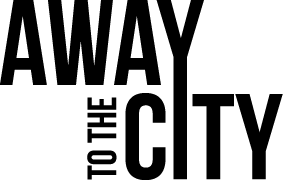9 Best Museums in Reykjavik You Can’t Miss (2025 Guide)
Looking for the best museums in Reykjavik, Iceland? We’re here to help you find the best one(s) for you.

Iceland is famous for its stunning landscapes, but its history and culture are just as fascinating. Despite Reykjavik being a smaller city with roughly 140,000 residents, Iceland’s capital boasts more than 60 museums and exhibitions. So, if you find yourself in Reykjavik, why not explore a museum or two?
But with so many options, choosing the best museums can be tricky. No worries; we’re museum enthusiasts who travel around and explore these cultural gems wherever we go, including Reykjavik.
If you’ve got limited time or only want to visit one or two, we’ve got you covered. Here are the top museums in Reykjavik that are worth your time – and also those you can skip. And yes, we’ve visited each one of them!
Some of the links in this post are affiliate links. If you click on the link and purchase the item or service, we may receive a small commission at no extra cost to you. By using our links, you’re supporting us to provide you with free content for your city trips. Learn more on our Privacy Policy page.
Short on time?
Here are our top picks for Reykjavik’s museums:
Must-Visit: If we had to pick only one, we recommend visiting Perlan. Here are our favourite museums by interest:
Entry Tickets: You can buy entry tickets for most of the museums in advance through GetYourGuide (very popular in Europe) or Viator.
Save Money: Consider the Reykjavik City Card for free admission to many museums and discounts on tours.
9 Best Museums in Reykjavik in 2025
We’ve picked out the best museums to visit in Reykjavik this year and grouped them by interest, so if your time’s limited (or you’re just not up for a full-on museum day), you can skip straight to the ones that suit you best:
History & culture | Science & nature | Art | Unique & quirky

Our top tip: Museum entry in Reykjavik isn’t the cheapest. If you’re planning to visit more than one or two, consider purchasing the Reykjavik City Card. This card provides free entry to many museums on our list (more info later in this post).
So, here are the museums we think are properly worth your time while you’re in the city.
Museums for History Buffs
1. National Museum of Iceland
Our Rating: 4.5/5 | Our #1 History Museum in Reykjavik
The National Museum of Iceland provides a glimpse into the Icelandic story, from the Viking era to the present day.
The journey begins with the ship that medieval settlers used to cross the ocean to their new home and ends with Icelanders connecting with the wider world through their modern airport.

The museum covers two floors and houses over 2,000 objects arranged chronologically.
Beginning on the second floor and progressing to the third floor, you’re taken on a tour through Icelandic history. You’ll be able to engage with interactive displays and see tools from the earliest settlers.

Our Top Tips for Visiting the National Museum of Iceland
- Utilise the free lockers in the basement to store your bags.
- Take advantage of the complimentary audio guide included in the entrance fee to enhance your experience. Bring your phone to scan the QR code, and don’t forget your headphones.
- If you also plan to visit the Settlement Museum, start with the National Museum of Iceland to better understand what you see.
- The museum also has temporary exhibitions on various topics. Check their official website to see what’s on during your visit.

Admission: ISK 2,500 (≈£14 or 17€ or US$18) | Free entry with Reykjavik City Card.
Opening Hours: Daily from 10am-5pm.
2. Árbær Open Air Museum
Our Rating: 4.4/5 | Our #2 History Museum in Reykjavik
Established as a working farm, Árbær transformed into Iceland’s largest open-air museum in 1957. It now houses over 20 buildings, forming a town square, village, and farm. Many of the houses were relocated here from central Reykjavik.

Árbær Open Air Museum vividly recreates the small-town atmosphere of Reykjavik during the 19th and 20th centuries.
In the summer, museum staff dress in costumes from these periods and actively take part in the museum’s activities and exhibitions.


The museum features diverse architectural styles. The buildings are like snapshots frozen in time, each set up as if the family has just stepped out. The periods represented in each building vary, and there are many explanation boards to guide you through the village.

Top Tips for Visiting Árbær Open Air Museum
- Unlike many other museums, Árbær isn’t in downtown Reykjavik (city centre). However, you can easily reach it by hopping on a local bus – if you have the Reykjavik City Card, the bus ride is free!
- We strongly recommend joining the guided tour, which is included with admission. Make every effort to make the tour as it adds a layer of understanding to your visit. Our guide (Tom) was fabulous!
- While you can explore this museum in winter (as we did), its true charm unfolds during summer. It’s an open-air experience, and in winter, it’s a bit quiet with no festivities. However, the winter visit will give you a stark perspective on how tough life was back then. If you have the flexibility, aim for a summer visit when the staff is in costume and more activities are available.

Admission: ISK 2,350 (≈£13 or 16€ or US$17) | Free entry with Reykjavik City Card.
Opening Hours: September to May daily from 1pm-5pm, June to August daily from 10am-5pm. Guided tours daily at 1pm.
Tickets for Árbær can only be bought at the ticket office on-site.
3. The Settlement Exhibition
Our Rating: 3.8/5 | Our #3 History Museum in Reykjavik
Reykjavik’s Settlement Exhibition is a museum built around the archaeological remains of one of the first houses in Iceland.
The exhibition was created in 2001 after an excavation uncovered the ancient ruins, making it one of the country’s heritage sites. It gives you a unique glimpse into early Viking Age life in the “Land of Fire and Ice”.

The main attraction is the preserved longhouse from 930 to 1000 AD that dates back to Icelandic Viking settlers. It’s one of the oldest human-made structures ever found in Iceland.

Around the longhouse, you’ll find objects from the Viking Age, such as tools, weapons, and jewellery.
This museum stands out because it doesn’t rely solely on static displays but employs multimedia technology to bring the Viking Age to life. You can listen to audio guides, watch videos, and interact with some of the exhibits.

Top Tips for Visiting the Settlement Exhibition
- Although the museum is relatively small, it connects to the Reykjavik City Museum’s exhibits through a tunnel (entrance included with the same ticket). Many visitors overlook the City Museum, which focuses on Reykjavik’s urban development and social history from the 18th century onward.
- If you’re pressed for time and can only explore one Viking exhibit, we suggest the National Museum of Iceland. It also covers the Viking era and offers a more budget-friendly option. Yet, if you have both time and resources available, consider visiting both, as they complement each other very well!

Admission: ISK 2,900 (≈£16 or 19€ or US$21) | Free entry with Reykjavik City Card.
Opening Hours: Daily from 10am-5pm. A guided tour through the exhibition is daily at 11am between May and August.
Tickets for the Settlement Exhibition can only be bought at the ticket office on-site.
4. Reykjavik Maritime Museum
Our Rating: 4.0/5 | Our #4 History Museum in Reykjavik
Reykjavík Maritime Museum provides an exciting journey into Iceland’s relationship with the sea. Its permanent exhibition explores the historical and cultural importance of fishing in Iceland. It also shows how it influenced the economy, traditions and way of life on the island nation.

You can step aboard the retired coast guard ship Odin (Óðinn) and discover its crucial role in Icelandic waters, especially during the Cod Wars.
This museum is perfect if you are interested in ships or fishing. Even though we’re not particularly passionate about these topics, we still found it highly engaging. It’s filled with fascinating exhibits and powerful archive films where seasoned sailors describe life at sea.

Top Tips for Visiting Reykjavik Maritime Museum
- The former coast guard ship Odin is a highlight you shouldn’t miss! Explore its decks, engine room, and captain’s bridge to get a feel for life at sea. Guided tours of the ship run at 1pm, 2pm, and 3pm from March through November.
- The museum is located right by the old harbour and offers stunning views of Reykjavik’s coastline and mountains. Take time to take it all in, especially on a clear day.

Admission: ISK 2,350 (≈£13 or 16€ or US$17) | Free entry with Reykjavik City Card (however, you have to pay extra for the coast guard vessel).
Opening Hours: Daily from 10am-5pm.
Tickets for the Maritime Museum can only be bought at the ticket office on-site.
Museums for Science & Nature Lovers
5. Perlan
Our Rating: 4.9/5 | Our #1 Science & Nature Museum in Reykjavik + #1 Overall Museum
Perlan, which translates to “The Pearl” in English, is an exploratorium where you can learn about Icelandic nature. There, you can discover the wonders of northern lights, glaciers, volcanoes, ocean life, and seabirds in a fun and interactive way.


Our Perlan highlights? The real ice cave and the 8K northern lights show in their planetarium – perfect if you missed them when visiting Iceland!


Beyond the exploratorium, Perlan has a 360° observation deck that provides spectacular views of Reykjavik. There’s also a café, a restaurant, a bar, and an ice cream parlour. Among Reykjavik’s museums, Perlan stands out to us as the overall highlight!

Did you know? Perlan’s 100-metre-long (238-feet-long) ice cave is the world’s first indoor ice cave, built with over 350 tons of snow from the Blue Mountains.

Top Tips for Visiting Perlan
- Purchase your ticket in advance online to save money (it costs more on-site).
- Plan at least half a day for your Perlan visit.
- If you explore the Ice Cave, be ready for a chilly experience. The cave is kept at -15°C (5°F). Make sure to bring your warm gear that you carry with you anyway.

Admission: Starting from ISK 5,390 (≈£30 or 36€ or US$39) | Entry is not included in the Reykjavik City Card, however, you’ll get a 10% discount with the card.
Opening Hours: Daily from 9am-10pm.
6. Aurora Reykjavik: The Northern Lights Centre
Our Rating: 3.9/5 | Our #3 Science & Nature Museum in Reykjavik
Aurora Reykjavik is Iceland’s first and only museum devoted to the Aurora Borealis (or Northern Lights). Here, you can gain an in-depth knowledge of the history and science behind this natural phenomenon.

The museum may be pretty small, but it houses several interactive exhibits and a 20-minute film showing the incredible Aurora Borealis from all over Iceland. Don’t miss your opportunity to try the 360° Aurora VR.
Even if you have never witnessed the Northern Lights before, the displayed photographs in the museum offer a great taste of the lights.

Aurora Reykjavik is an excellent choice if your sole interest is the Aurora Borealis and you’re not planning to visit Perlan. Otherwise, we recommend Perlan over Aurora to learn more about this phenomenon.
Top Tips for Visiting Aurora Reykjavik
- If you plan to hunt the northern lights in Iceland, it’d be beneficial to visit this museum BEFORE setting out. It offers expert tips on maximising your chances of spotting the Aurora, capturing photos, and practising using their photo simulator.
- Take advantage of the complimentary audio guide included in the admission fee. Simply scan the QR code at the entrance with your phone and remember to bring your headphones with you.
- To avoid the crowds, visit the museum before 10am or after 7pm. We went there at 9am when it opened and had the entire museum to ourselves.

Admission: ISK 3,900 (≈£22 or 26€ or US$28) | Entry is not included in the Reykjavik City Card; however, you’ll get a 50% discount at the Northern Lights Centre.
Opening Hours: Daily from 9am-9pm.
7. The Lava Show
Our Rating: 4.6/5 | Our #2 Science & Nature Museum in Reykjavik
The Lava Show in Reykjavik is a unique attraction that allows you to experience the power and beauty of real molten lava in a safe and controlled environment.

Did you know? With its 32 active volcanoes, Iceland is a volcanic hotspot. The island experiences frequent volcanic activity due to its location on the Mid-Atlantic Ridge, where the Eurasian and North American tectonic plates meet.

We’ll be honest; we approached the show with scepticism, but it’s one of Iceland’s top-rated attractions for a good reason. As the only live lava show in the world, we can assure you it’s unlike anything else you’ve seen.
This one-hour show recreates a volcanic eruption by heating small batches of lava to an impressive 1,100°C (2,000°F) and pouring them into a specially designed showroom. As the lava flows, you’ll feel its intense heat.

Our guide was impressively knowledgeable and conveyed information engagingly. You’ll delve into the science of volcanoes and lava flows, as well as the history and impact of volcanic eruptions in Iceland.
Top Tips for Visiting the Lava Show
- Due to its immense popularity, it’s wise to purchase tickets a few days in advance to secure the time slot of your choosing.
- You have two seating options: standard seating or the premium lounge experience, which offers additional comfort, a private bar, and a better view from a balcony seat. However, premium tickets cost around 70% more, and we felt that the balcony seats were too far away from the action. We advise saving the additional money and opting for standard seats.

Admission: ISK 5,900 (≈£33 or 39€ or US$43) for the standard seating, and ISK 9,900 (≈£56 or 66€ or US$72) for the premium experience. | There are no discounts with Reykjavik City Card.
Opening Hours: There are 3-6 shows daily, typically at 10am, 12pm, 2pm, 4pm, 6pm, and 8pm.
Museums for Art Enthusiasts
8. Reykjavik Art Museum Hafnarhús
Our Rating: 3.8/5 | Our #1 art museum in Reykjavik
Reykjavik Art Museum Hafnarhus is one of three locations of Reykjavik Art Museum, Iceland’s largest visual art institution. Translating to “Harbour House”, Hafnarhus can be found in the oldest part of Reykjavik, where the city’s boats and first docks lay.

What makes Hafnarhús unique is its focus on contemporary art, featuring both local and international artists across its six galleries.
You’ll find works by key figures of Icelandic art, such as painter Jóhannes Kjarval, sculptor Ásmundur Sveinsson, and sculptor Gerður Helgadóttir. There’s also a comprehensive collection by Erró, a prominent figure in the global pop art scene (and probably the most famous Icelandic artist).

If you’re an art enthusiast and can only explore one art museum, this is the one we’d recommend.
Top Tips for Visiting Reykjavik Art Museum Hafnarhús
- Free lockers for storing your belongings are available by the entrance.
- If you have additional time, consider visiting the other two locations of the Reykjavik Art Museum: Kunsthús focuses on Icelandic and international modern and contemporary art, and Ásmundarsafn houses the most extensive collection of Ásmundur’s sculptures and reliefs.

Admission: ISK 2,350 (≈£13 or 16€ or US$17), which includes access to all three branches | Free entry with Reykjavik City Card.
Opening Hours: Daily from 10am-5pm, except Thursdays (10am-10pm)
Tickets for the Reykjavik Art Museum can only be bought at the ticket office on-site.
Museums for Unique Interests
9. Icelandic Phallological Museum
Our Rating: 4.1/5 | Our #1 Unique & Quirky Museum in Reykjavik
Ah, the infamous “penis museum” – one of the most unique museum experiences you’ll encounter! The Icelandic Phallological Museum proudly claims the title of the world’s largest display of penises and penile parts.

Þórður Sigurðsson, a former schoolteacher who developed an avid interest in collecting phallic items, founded this museum in 1997. Today it boasts over 300 penises from more than 100 species of mammals, ranging from tiny hamster specimens to the impressive member of a blue whale, measuring a whopping 170 cm (67 inches) long!
Beyond animal parts, this museum exhibits penises from Icelandic folklore creatures, phallic art and crafts, and even a human penis. Although the subject matter might raise some eyebrows, the museum maintains a scientific and educational approach to its exhibits.

Though slightly overpriced, this museum provides a generally interesting experience. You might be disappointed if you visit expecting a bit of a laugh. However, if you’re interested in zoological anatomy, you’ll feel right at home.
Top Tip for Visiting the Icelandic Phallological Museum
- The star of the museum is the Phallic Café, where you can enjoy phallus-shaped waffles and indulge in “cock-tails” and beer (try the Icelandic Penis Ale!).


Admission: ISK 3,300 (≈£19 or 22€ or US$24) | Entry is not included in the Reykjavik City Card, however, you’ll get a 20% discount on admission with the card.
Opening Hours: Daily from 10am-7pm
Tickets for the Phallological Museum can only be bought at the ticket office on-site.
Other Noteworthy Museums in Reykjavik
Our list above highlights the best museums we’ve visited in Reykjavik. If you find yourself with more time on your hands, there are additional museums that are worth considering. While we found some of them interesting, we wouldn’t classify them as “must-see” museums:
Whales of Iceland (nature & science) – Showcases Icelandic whale species and their biology. With 23 impressive life-size replica exhibits to view (including a blue whale, sperm whale, and a beluga), this museum is small and can be enjoyed within 30-45 minutes.
Reykjavik Museum of Photography (art) – If you’re passionate about photography and have a Reykjavik City Pass, this exhibition showing local and historical Icelandic culture might be worth visiting. There are three exhibition spaces, but be warned: the overall museum is really tiny and the exhibition is very limited. For a more extensive collation, consider visiting the National Museum of Iceland instead. They house Iceland’s largest photography collection.

Saga Museum (history & culture) – Uses wax figures to recreate scenes from Icelandic sagas and folklore, creating an exciting visit that takes approximately 30-40 minutes. High-quality models and displays might make this a worthwhile visit.
The Icelandic Punk Museum (unique & quirky) – Explores the history and influence of Icelandic punk music through this unusual museum housed in an underground public restroom. There are some intriguing photos, graffiti art pieces, videos, and information on Iceland’s punk history, but it’s a tiny space!

Einar Jónsson Museum (art) – Dedicated to the works of Icelandic sculptor Einar Jonsson, this museum may be worthwhile if sculpture is your passion. There is an admission charge; however, you can stroll through the sculpture garden for free.
National Gallery of Iceland (art) – Home to a comprehensive collection of Icelandic art from the 19th century until now. It’s a small art museum, and while there are a few interesting pieces, it didn’t stand out as unique or memorable to us.
Visiting Museums with the Reykjavik City Card
What is the Reykjavik City Card?
Reykjavik City Card offers an easy and cost-effective way to explore museums, activities, and public transportation in Reykjavik. You can choose between 24-hour, 48-hour or 72-hour cards depending on your exploration needs.

What it includes:
- Free Entry: Enjoy complimentary access to over 15 museums and galleries across Reykjavik, such as the National Museum of Iceland, Reykjavik Art Museum, and the Settlement Exhibition.
- Free Unlimited Bus Travel: Navigate the city easily, taking advantage of free unlimited bus travel within the Reykjavik Capital Area.
- Additional Benefits: The card offers discounts on numerous tours, shops, and services in Reykjavik, as well as free entry to all Reykjavik swimming pools.
Pricing:
- Reykjavik City Card 24 hours: ISK 5,040 (≈£28 or 34€ or US$37)
- Reykjavik City Card 48 hours: ISK 7,000 (≈£39 or 47€ or US$51)
- Reykjavik City Card 72 hours: ISK 8,630 (≈£49 or 58€ or US$63)
Is the Reykjavik City Card worth it?
Reykjavik City Cards are an excellent way for tourists to maximise their city exploration while saving both time and money. Consider your itinerary and budget to see if the card is the right choice for you.
Pros
Cons
Here are two examples:
- Example 1 – Visiting National Museum of Iceland + Perlan: If all you want to see is the National Museum of Iceland and Perlan, the City Card won’t be worth it because Perlan isn’t included in the City Card.
- Example 2 – Visiting National Museum of Iceland + the Settlement Exhibition: If you wanted to see these two museums, paying individually would cost ISK 5,400. However, purchasing the Reykjavik City Card for 24 hours at ISK 5,040 would be the better choice.
Reykjavik Museums: FAQ
Below are some of the most popular questions that we’ve come across related to visiting museums in Reykjavik.
Are museums free in Reykjavik?
Museums in Reykjavik generally don’t offer free admission. However, some offer it on specific days or for particular groups, like children or seniors. To get more information about free entry schedules, it’s a good idea to check the museum’s official website or contact the museum directly.
Is the National Museum of Iceland worth it?
Absolutely! The National Museum of Iceland is an invaluable source for understanding the culture and history of Iceland. It features artefacts from Viking settlements to contemporary life. For us, it’s the #1 history museum in Reykjavik you should visit.

How many museums are there in Reykjavik?
Reykjavik may be a relatively small city, but there are over 60 museums and exhibitions dedicated to various aspects of Icelandic culture, history, and art. From the unique Icelandic Phallological Museum to the Reykjavik Art Museum, there’s sure to be something that piques your interest!
Is Perlan Iceland worth it?
Without a doubt! If you only have time for one museum in Reykjavik, make it Perlan. It’s the ideal way to learn about Icelandic nature – northern lights, glaciers, volcanoes, ocean life, and seabirds can be explored interactively here – plus, there is even an observation deck offering breathtaking city views.

How long do you need at the National Museum of Iceland?
The time needed at the National Museum of Iceland will depend on your pace and interests. An in-depth visit may take 2-3 hours, and a quicker overview might be done in an hour. We spent 90 minutes at the museum, which gave us enough time to complete listening through the museum’s audio guide.
Wrap-Up
Reykjavik might be on the smaller side, but it’s packed with museums that are well worth your time and money. As museum fans ourselves, we hope this guide has helped you find a few that match what you’re most interested in.
If your time’s tight and you can only pick one, go for Perlan. It’s got a great mix of nature, science and art, plus the views from the observation deck are pretty hard to beat.
Oh, and if you’re heading to Iceland during the colder months, have a look at our guide to the best things to do in Reykjavik in winter – there’s loads more to get stuck into.
Like this post?
Save it to Pinterest for later!











